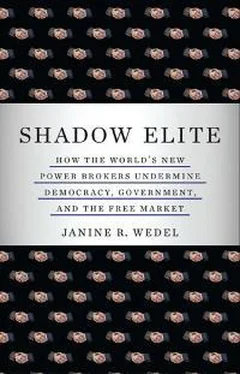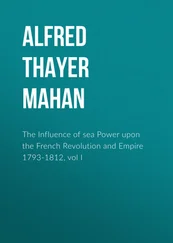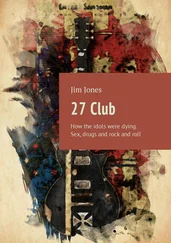Operating at the official-private nexus, institutional nomadic groups and clans have a lot to teach us about the potential operations of today’s flexians and flex nets. Agilely adapting to their surroundings, these groups and clans have come a long way from their own precursor, the blat practitioners of an earlier era. Today they not only personalize bureaucracy through one-time transactions for survival; they organize the interrelations between state and private, bureaucracy and market, to, say, allocate state resources for their own benefit, which, of course, flexians and flex nets do as well.
My observation of institutional nomadic groups and clans has helped me theorize about flexians and flex nets and the environments in which they arise. Nomadic groups and clans exhibit most of the features of flexians and flex nets. Like flex nets, nomadic groups and clans operate at the interstices of official and private power—with inside information closely held—and help organize the relationship between them. All these groups position their members at the state-private nexus, ply their skills at skirting government rules of accountability and business codes of competition, and mediate between and blur official and private interests. All are selective about the arenas in which they intervene: They tend to hang out where they can control or exert influence over coveted resources or parts of the state bureaucracy and economy. And while they all privatize information and engage in shared action—the second feature of flexians and flex nets—they are not all propelled by conviction, which this second feature also encompasses. In this respect, flexians and flex nets famously distinguish themselves from their nomadic and clan brethren.
Members of nomadic groups and clans personalize bureaucracy (the first feature of flexians), using other members and allies to skirt or skate through it, and form an intricate spine (the corresponding feature of flex nets). They anchor themselves primarily in the group rather than in the office or organizations with which they are officially associated; their bread is buttered mostly with the group. Flex nets, too, exhibit all these features.
Members of nomadic groups and clans exhibit the third feature of flexian behavior in spades: juggling roles and representations . Like members of flex nets, they interact with one another in multiple roles over time, both inside and outside official structures: in government, business, and NGOs, both domestic and foreign, as relevant to achieving their goals. They form a resource pool to bolster their influence. Their power derives partly from their coordination of efforts and roles within the group. Members of clans “can be dispersed,” writes sociologist of elites Olga Kryshtanovskaya, but they “have their men everywhere.” This also describes flex nets. 29
All the while, members of clans and institutional nomadic groups work to expand executive power at the expense of checks and balances, which helps them further concentrate information, resources, and decision making in economic, political, and legal domains in just a few hands. The more interdependent these domains, the greater the potential influence of the groups. In Russia, for instance, “Property rights are very conditional . . . to this day. . . . Private business exists only by the grace of the state,” Kryshtanovskaya remarked in 2007. The result is, as another analyst reported: “It is still impossible to make one’s money yield a profit without negotiations at some point with state agents. Financiers, industry managers, journalists and scholars agree that one’s career depends on one’s ability to weave political networks.” As under Communism, law in Russia is sometimes powerfully used to disadvantage or discredit political opponents. During the 1990s regime of President Boris Yeltsin, accusations of corruption were frequently leveled to force the resignation of heads of investigatory offices. Yeltsin’s successor, Vladimir Putin, went a step further. Two well-known cases are the detention of media magnate Vladimir Gusinsky on charges of embezzlement in June 2000, a month after Putin assumed office, and the imprisonment of Mikhail Khodorkovsky several years later, along with the breakup of his massive business empire. This simple message was conveyed, one journalist observed: “If you are loyal, steal as much as you like. If you aren’t then watch it!” 30
Concentrating power in legal, political, and economic domains and gaining the means to control the state-private nexus not only guarantees nomadic groups and clans influence, it offers them the opportunity to organize all these realms. These groups often succeed admirably, just like the flexians who relax rules at the interstices of official and private institutions (the fourth feature of flexians) and the flex nets who secure a hybrid habitat (the corresponding feature of flex nets) and reorganize both official and private structures to realize their goals. The influence of all these groups is more multipronged and monopolizing than that of interest groups or lobbies. The result is that, while the state can be shaken, as happened in the East, power is remarkably stable. It resides somewhere in the neverland between state and private.
The Neverland of Rywingate
Who operates in this neverland, embodying the merging of state and private? One elusive, yet real, group of institutional nomads that was especially visible in the late 1990s is known as Ordynacka, a long-standing informal Polish association whose members came together during their student days under the umbrella of a communist club. Ordynacka members are connected with each other in multiple ways through business, political, and other activities. 31It’s worth looking more closely at how they operated, to give a flavor of how flex nets have later functioned.
In 2002 Ordynacka developed a formal, overlapping incarnation by registering with the government as an NGO called the “Student Movement Ordynacka Association.” Unusual for Polish NGOs, the association’s statute outlines a stated political purpose. It specifies that its members can hold public positions; actively participate in the creation of state politics; and expect material, financial, and personal support from other members of the association while using its name and logo. Very little information is publicly available about the group or its activities.
What we do know is that Ordynacka counted among its ranks professionals placed in the most important political and economic structures, including banks, political parties, and the media. The popular Aleksander Kwasniewski, who served as president of Poland from 1995 to 2005, is among them. An up-and-coming minister of sport in Poland’s last communist government, Kwasniewski joined the SLD (Democratic Left Alliance), the main successor party that emerged from the ruins of the Communist Party following Poland’s systemic changes of 1989. In 1991 Kwaśniewski presciently told me that “the next few years belong to Solidarity, but then we [the postcommunists] will be back.” 32
“We” did come back with a vengeance. Ordynacka helped ensure the influence of postcommunist-connected players in the economy, not to mention in politics and the media. Robert Kwiatkowski, president of Polish Television, a public broadcaster that dominates the market more than any other European public broadcaster, was among them. So was Włodzimierz Czarzasty, secretary of the National Radio and Television Council, a politicized body set up in 1992 to regulate Polish Television and other airwaves. 33
While it is difficult to define what Ordynacka is—it can’t be reduced to a political party, NGO, social club, business, or lobbying organization—it is clear that it has wielded power and influence. A glimpse of this was hinted at during the course of a scandal that Poles have dubbed “Rywingate.” Prominent members of Ordynacka were part of a “group of power holders,” one of the two key parties in a saga that, for several years beginning in 2002, riveted the nation. 34
Читать дальше












